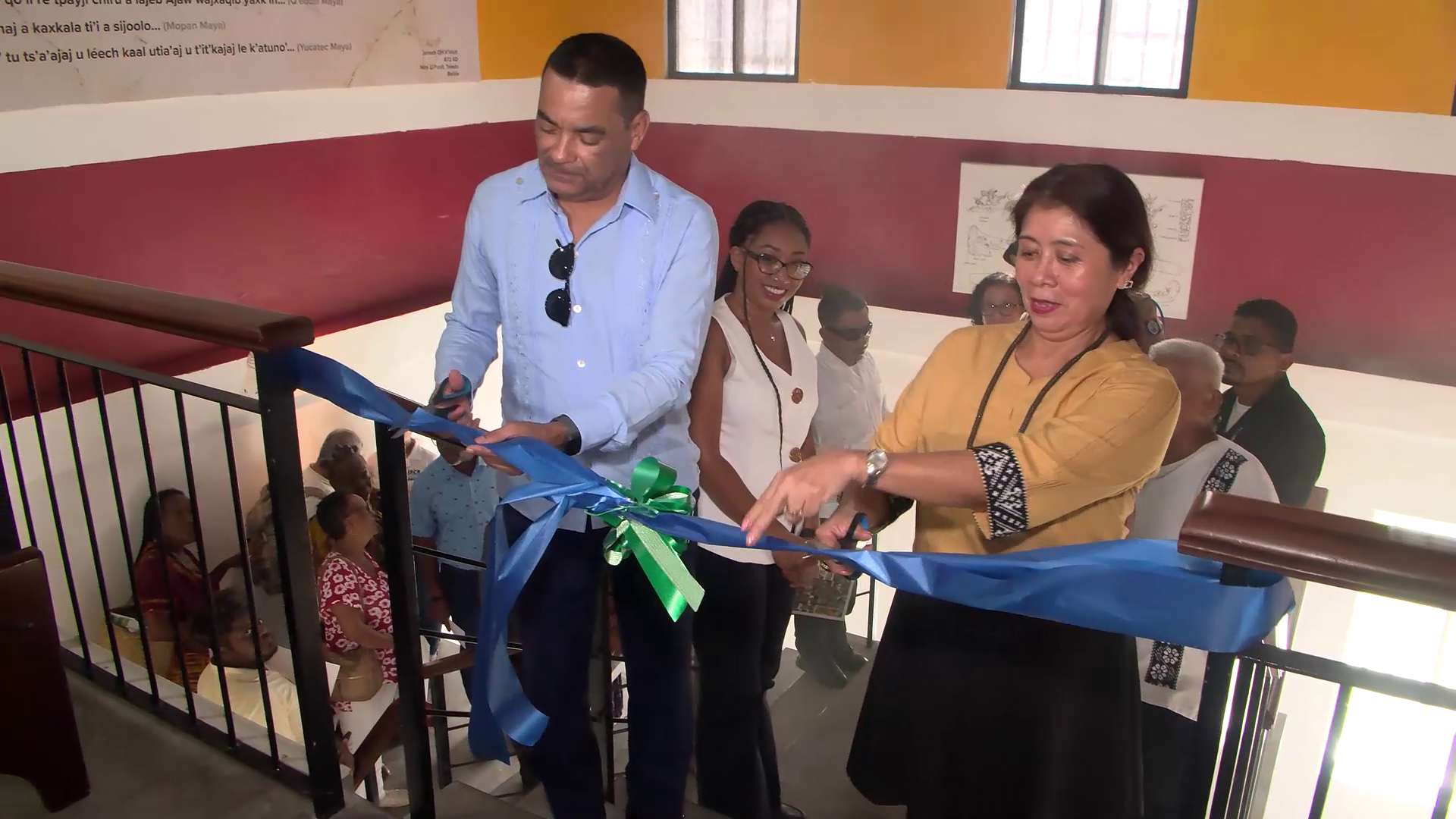Culture and beauty come together in a stunning display of designer craftsmanship, as showcased in the Miss Universe Belize 2024 national costume, unveiled this morning. The costume draws inspiration from the traditional Mayan Deer Dance, which is still performed at special ceremonies today. More than just a performance of masked dancers moving to the marimba’s rhythm, the Deer Dance tells a deeper story—depicting the relationship between the Maya people and the land, as well as scenes from the era of the Spanish conquest. News Five’s Paul Lopez has more in tonight’s Kolcha Tuesday segment.
Paul Lopez, Reporting
A Mayan custom that tells the story of the relationship between the Maya people and the land will come alive on the 2024 Miss Universe stage in Mexico City. Miss Universe Belize, Halima Hoy, revealed her national costume this morning, and it has a striking resemblance to the deer dance attire.
Halima Hoy, Miss Universe Belize 2024
“The back story about it is that a deer farmer spoke to the mountains and the mountains told him to build a marimba. He played the Marimba and the deer came dancing and other animals as well. But behind that, it is the resilience of the Maya people during their colonization period and how they were able to keep their identities and stay true to themselves.”
The soundtrack to the deer dance is played on a three-person marimba. A portion of the dance portrays how this music called all the animals from the mountains and woods. As the story progresses, the Spaniards appear ready to take over the lands. The deer dance attire is typically adorned with an abundance of mirrors to reflect the resistance of the Maya people to the invading forces.
Halima Hoy
“Xwankil, the Maya deer dance is a very respected and part of the Mayan culture. We had the submissions from artist in Belize. We wanted it to be a Belizean custom. They submitted their designs and we got a lot of good ones but Xwankil caught the attention of the Belizean population and the organization. They got the most votes and we chose that one because it has such a deep meaning and it respects one of our ethnic groups here in Belize.”
Towards the end of the story, the dancers act out a scene in which the invaders produced a gun and shot a deer. One iteration is that this did not end well for them. Another iteration suggests that the shooter was a hunter and that he shot a rabid deer. According to that account, the animals banned together to escort the hunter out of the forest so that he does not continue to hunt while also celebrating a successful hunt. The costume was designed and created by Ronelli Requena, Emilio Perrera and Damian Moore.
Ronelli Requena, Founder, Zayvah Sarai
“We named the costume Xwankil. It is depicting the Maya deer dance which is very special and we wanted to integrate the real story of what it is the deer dance, the hunting scene, being out in the jungle. But there is a very deep meaning beyond just the hunting scene. It is more about the harmony which man and earth come together. It is basically saying like respect for mother nature and in today’s day and age everything falls into place perfect. In 2024 that has been one of the biggest topics, climate change and climate action.”
The traditional costume also features a headpiece with antlers made from branches or other natural materials. It is often decorated with feathers and beads. Deer skull headdresses and masks are also traditionally worn. The colours of the traditional costumes are very vibrant. Requena and the team of creators were sure to include every aspect of the traditional wear while making it functional for a beauty pageant.
Ronelli Requena
“We had the costume. We had one big thing that was left, what was the message we wanted to send. We wanted to come up with a tag line. When you see the costume, you could see the beauty of Belize but also what the costume is about. The fires that happened down south and it really touched me, so I thought it was only right to integrate it into the costume itself. And it was very important for me to stay true and very respectful for the culture and the deer dance but yet find ways on how we can make it more feminine, because it is a pageant.”
As Halima Hoy prepared to leave Belize and travel to Mexico today, she told us that the support for her journey and now the costume has been overwhelming.
Halima Hoy, Miss Universe Belize 2024
“I know there is a lot of hard work behind it, Damian, Ronelli and Emilio put their heart and souls into this costume. It was a group effort. We did a lot of fittings, adjustemetns, we were true to the costume. If you ever seen the deer dance in real life or on the videos. The costume is a replica of that. It is bold and brilliant, and I love it. I will say it is the best, because it is my costume.”
Reporting for News Five, I am Paul Lopez.
